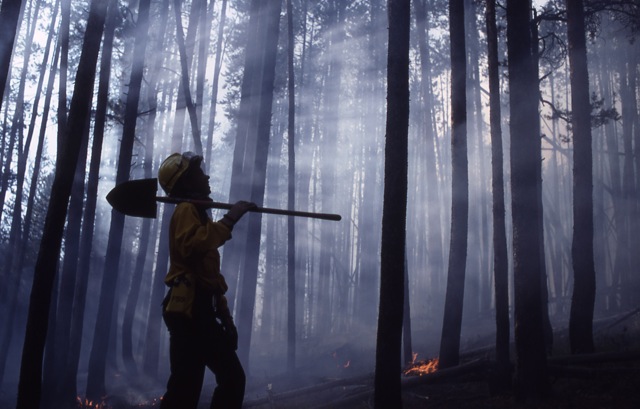
In June of 1988, lightning ignited a series of forest fires that spread across Yellowstone National Park, burned for almost three months, and consumed nearly a third of the park. They were called the worst fires in park history, and ultimately destroyed about one million acres.
At first, the National Park Service allowed these naturally-caused fires to burn out on their own, as was its policy, but when it became clear by mid-July that these fires were moving at an unprecedented rate, they changed tactics and decided to fight every fire.
But dry weather, high winds, and acres upon acres of underbrush set the stage for a perfect storm of wildfires that an army of firefighters, hundreds of aircrafts, and 120 million dollars couldn't stop. The fires ended only with an act of nature -- the fall of snow in September.
The continuing narrative that summer was that park officials had negligently let the fires burn out of control and destroyed the legendary national park, which had supplied generations of visitors with fond memories and colorful snapshots.
But the story that played out on national television was incomplete.
After the Big Burn of 1910 destroyed some 3 million acres across the Northwest, federal officials suppressed every fire as soon as it started. They eventually used Smokey Bear to drive that policy home, beginning in the 1940s. Smokey was so successful in getting his message across, that he became the most effective firefighter in history, and his motto became a national slogan, "Only YOU Can Prevent Forest Fires."
But suppressing all fires allowed tons of underbrush to build up across the country's national parks for decades, priming them for huge fires. To reduce that threat, officials shifted tactics in 1972 to allow naturally-caused fires to burn themselves out, and, hopefully, reduce potentially deadly build up of underbrush.
But it turned out to be too little too late. By 1988, acres of dry underbrush in Yellowstone acted like gasoline, feeding the flames and giving everyone an education in fire.
Retro Report revisits major events in an attempt to provide context and understanding for news stories and current events today. What we can learn from the Yellowstone fires of 1988 is that fire belongs in any forest - letting some fires burn is crucial to reducing the threat of wildfires.
"I have to admit that up until I started researching this story, I was under the impression--as I'm sure are countless others -- that ALL fire was bad and especially the raging fires I was watching on TV," said Cristina Maldonado, a co-producer of the piece. "To learn that fire is in fact necessary, that it needs to be reintroduced to the landscape to create a fire-adapted landscape; that you need fire to fight fire and that most of the trees in Yellowstone are fire-dependent -- that was news to me."
But today, with people building homes near wilderness areas in the West, letting some fires burn is not an option near populated areas, which allows underbrush to build up, leading to the forest fires we see today on the evening news.
Olivia Katrandjian is a reporter at Retro Report.
The Summer of Fire is the first video of Retro Report's second season. Our next video will be published on Monday, September 9, 2013.
Go to www.retroreport.org to view our library of videos.